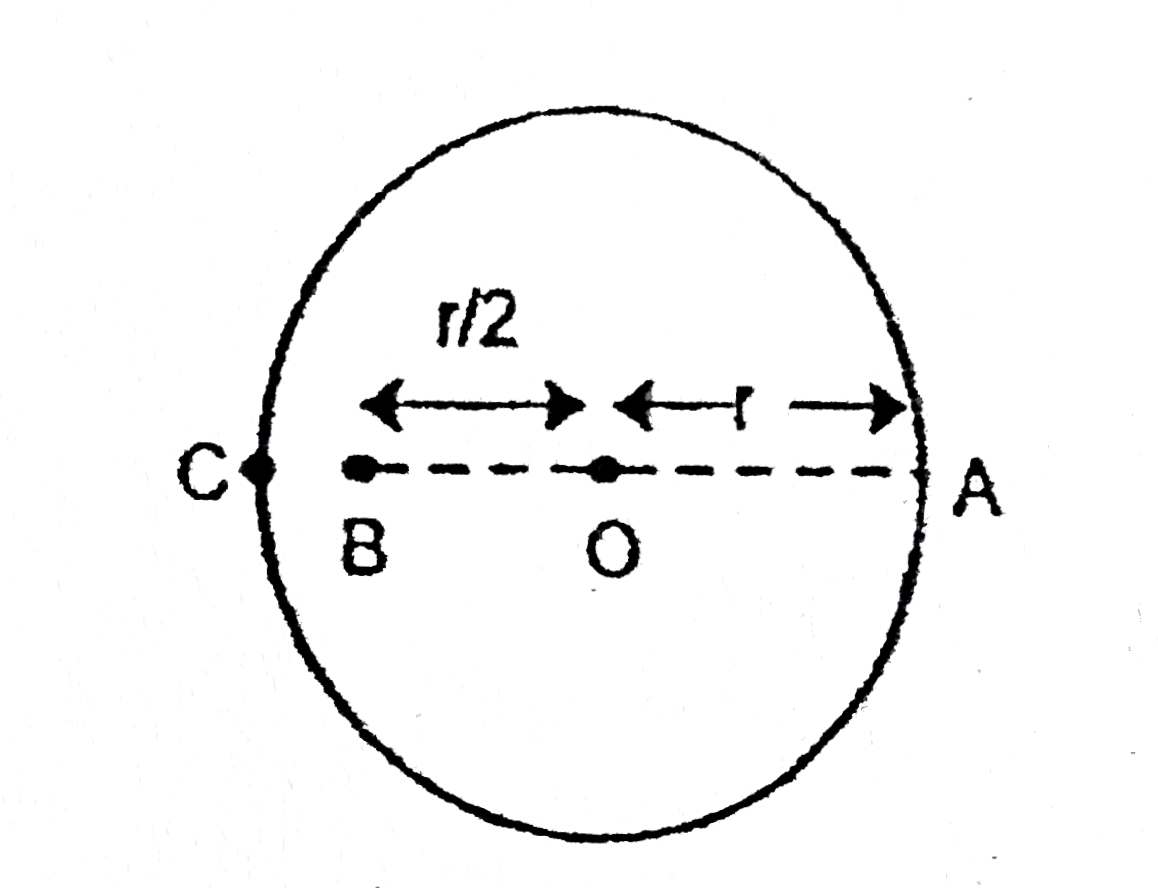A particle is revolving in a circle of radius R. If the force acting on it is inversely proportional to R, then the time period is proportional to
R
R2
1/R
1/R2
The correct Answer is:A
To solve the problem, we need to analyze the relationship between the force acting on a particle revolving in a circular path and the time period of its revolution.
1. Understanding the Force:
We know that the force acting on the particle is inversely proportional to the radius R. Therefore, we can express this relationship mathematically as:
F=CR
where C is a constant.
2. Centripetal Force:
For a particle of mass m moving in a circle of radius R with angular velocity ω, the centripetal force required to keep the particle in circular motion is given by:
F=mRω2
3. Equating Forces:
Since the force F acting on the particle is also equal to the centripetal force, we can set the two expressions for F equal to each other:
CR=mRω2
4. Rearranging the Equation:
Rearranging the equation gives us:
C=mR2ω2
5. Solving for Angular Velocity:
From the equation C=mR2ω2, we can express ω2 as:
ω2=CmR2
6. Finding Angular Velocity:
Taking the square root gives us:
ω=√Cm⋅1R
This shows that ω is inversely proportional to R:
ω∝1R
7. Relating Angular Velocity to Time Period:
The relationship between angular velocity ω and the time period T is given by:
ω=2πT
Therefore, substituting this into our previous relationship gives:
2πT∝1R
8. Finding the Time Period:
Rearranging this relationship leads to:
T∝R
This means that the time period T is directly proportional to the radius R.
Conclusion:
The time period T is proportional to the radius R.
We know that the force acting on the particle is inversely proportional to the radius R. Therefore, we can express this relationship mathematically as:
F=CR
where C is a constant.
For a particle of mass m moving in a circle of radius R with angular velocity ω, the centripetal force required to keep the particle in circular motion is given by:
F=mRω2
Since the force F acting on the particle is also equal to the centripetal force, we can set the two expressions for F equal to each other:
CR=mRω2
Rearranging the equation gives us:
C=mR2ω2
From the equation C=mR2ω2, we can express ω2 as:
ω2=CmR2
Taking the square root gives us:
ω=√Cm⋅1R
This shows that ω is inversely proportional to R:
ω∝1R
The relationship between angular velocity ω and the time period T is given by:
ω=2πT
Therefore, substituting this into our previous relationship gives:
2πT∝1R
Rearranging this relationship leads to:
T∝R
This means that the time period T is directly proportional to the radius R.
The time period T is proportional to the radius R.
Similar Questions
Knowledge Check
If the force acting on a body is inversely proportional to its speed, then its kinetic energy is
Alinearly related to timeBinversely proportional to timeCinversely proportional to the square of timeDa constant
A small planet is revolving around a massive star in a circular orbit of radius R with a period of revolution T. If the gravitational force between the planet and the star were proportional to R−5/2, then T would be proportional to
View SolutionA body is acted upon by a force which is inversely proportional to the distance covered. The work done will be proportional to
View SolutionA particle is moving with a uniform speed in a circular orbit of radius R in a central force inversely proportional to the nth power of R. If the period of rotation of the particle is T, then :
View SolutionA particle is revolving in a circle of radius r and centre at 'O' with uniform angular velocity ω. Choose the correct option(s) :

View SolutionThe mean free path of molecules of a gas (radius r) is inversely proportional to
View SolutionA particle of mass M is revolving along a circule of radius R and nother particle of mass m is recolving in a circle of radius r. If time periods of both particles are same, then the ratio of their angular velocities is
View SolutionStatement 1: If a proton and an α-particle enter a uniform magnetic field perpendicularly with the same speed, the time period of revolution of α-particle is double than that of proton.
Statement 2: In a magnetic field, the period of revolution of a charged particle is directly proportional to the mass of the particle and inversely proprotional to the charge of particle.
View Solution
